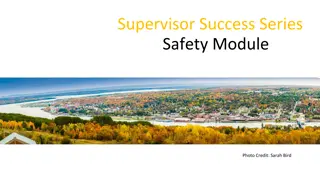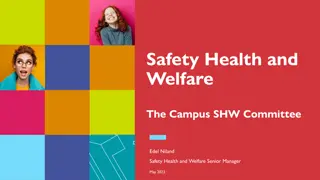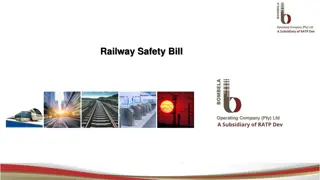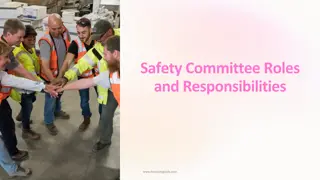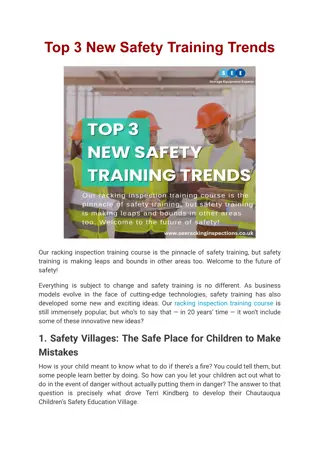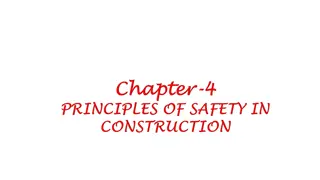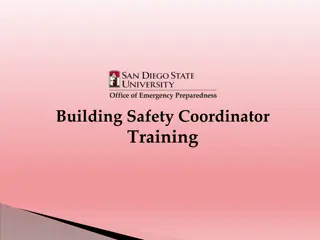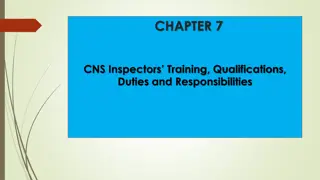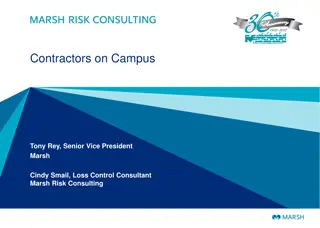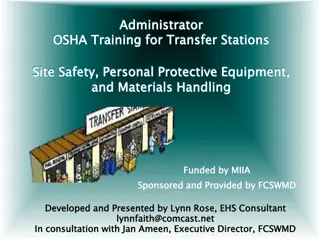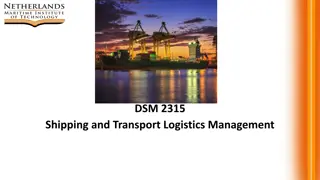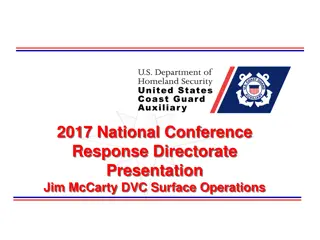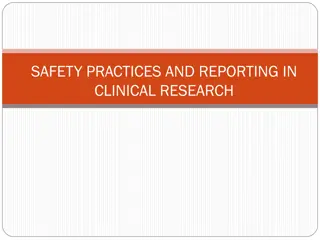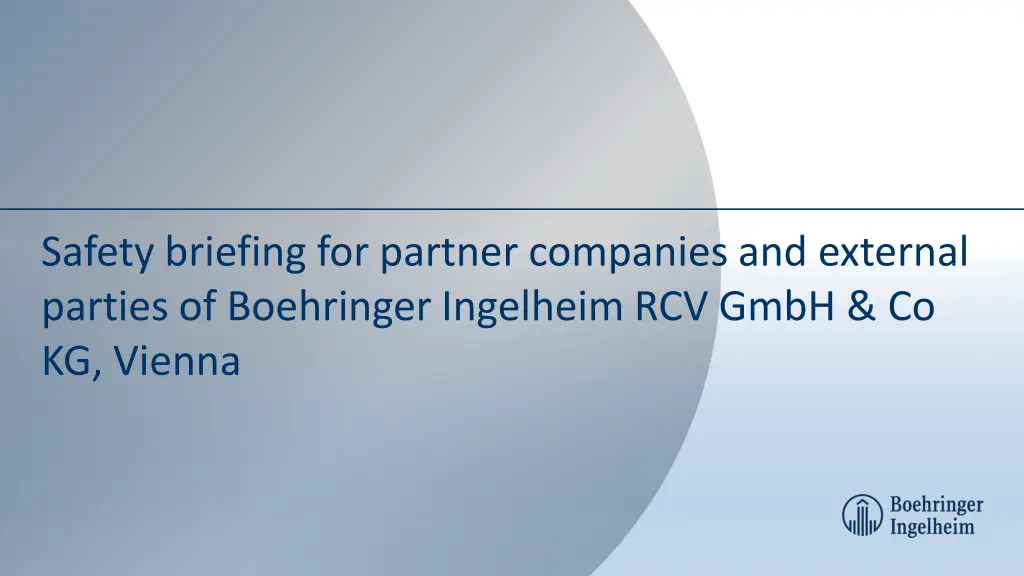
Safety Briefing for Partner Companies and External Parties of Boehringer Ingelheim RCV GmbH & Co. KG, Vienna
Ensure safety at Boehringer Ingelheim with this comprehensive briefing covering important guidelines and emergency procedures for partner companies and external parties working in chemical-pharmaceutical areas. Stay informed about potential hazards, safety measures, and rules of conduct to maintain a secure working environment.
Download Presentation

Please find below an Image/Link to download the presentation.
The content on the website is provided AS IS for your information and personal use only. It may not be sold, licensed, or shared on other websites without obtaining consent from the author. If you encounter any issues during the download, it is possible that the publisher has removed the file from their server.
You are allowed to download the files provided on this website for personal or commercial use, subject to the condition that they are used lawfully. All files are the property of their respective owners.
The content on the website is provided AS IS for your information and personal use only. It may not be sold, licensed, or shared on other websites without obtaining consent from the author.
E N D
Presentation Transcript
Safety briefing for partner companies and external parties of Boehringer Ingelheim RCV GmbH & Co KG, Vienna
Reason for Instruction At the site, people work in chemical pharmaceutical areas, laboratories, workshops and administration. There is a wide range of potential hazards on the company premises. As a chemical-pharmaceutical company, Boehringer Ingelheim is subject to particularly strict safety requirements. The training explains the most important safety measures and rules of conduct and points out possible dangers. 2
General Guidelines Any danger to people must be reported to the BI contact person immediately,. If necessary, all work must be stopped. Every work accident with injury, accident with property damage, every critical or dangerous situation (near accident), must be communicated to your BI contact person promptly! Only flawless tools and aids are allowed for use. The use of Boehringer Ingelheim resources such as personal protective equipment, ladders, and tools are only permitted with the expressed permission of the BI contact person. Adhere to the parking regulations! Fire service entrances and restricted areas must be kept clear at all times. (BI has the right to have unsafely parked vehicles towed away at any time.) 3
General Guidelines The workplace (also outdoors) is to be kept clean and in order. Doors to laboratories, production and service areas must be closed at all times. Always leave your workplace in a clean state. Smoking, eating and drinking is forbidden in all buildings! There are specifically designed areas for this use them! Also, alcohol, intoxicants and weapons are always forbidden! Do not enter laboratories and production areas with infectious diseases! If you have questions concerning this, please go to AMD (occupational medical service / company doctor)! 4
In Case of Emergency Call the emergency number! Extension 2222 / mobile: +43 1 80105-2222 in case of fire, press the next alarm-button immediately! Remember the 5 Ws ! WO Where did it happen? (Remember the building s number!) WAS What happend? WIE VIELE How many injured? WELCHE What kind of injuries? WARTEN Wate for further questions/instructions! Use the emergency facilities! There is an obligation to provide first aid! Consult the company doctor in event of any injuries. Generally: every accident on factory premises must also be reported to your BI contact person! 5
In Case of Fire Make sure you know the escape routes and assembly points using the security plans on site! Keep escape and escape routes clear, Don t leave any fire loads standing around! Keep fire fighting equipment, fire alarms, fire extinguishers, and wall hydrant clear! Don t wedge open fire doors! In case of an alarm, leave the building immediately and go to the assembly point! 6
In Case of Fire Many areas are equipped with automatic fire alarm devices for the early detection of fires. Important Guidelines for fire-monitored rooms: Prevent the emission of smoke and dust Avoid manual activities, such as sawing, milling, drilling, sweeping heavily soiled and dry surfaces, and cleaning with hot water (e.g. with a steam jet) Avoid generating excessive heat, e.g. by blow-drying labels, opening hot drying cabinets, welding, or scarfing work Welding and other fire work (e.g. flame cutting, flame soldering, abrasive cutting, grinding, heating, thawing, etc.) are only permitted with written approval! Your BI contact person will help, if you have any questions. 7
In Case of a Building Alarm Pay attention to sirens and / or loudspeaker announcements, follow the instructions of the rescue workers. Leave the building using the nearest escape routes. Help injured people and take them with you if possible. Go to the assembly point immediately (check on-site information for its location) Use staircases Leave the lift immediately, don t use them! Check if everyone is present at the assembly point and report to the operations management. Your own safety and that of others has the highest priority! 8
In Case of a Building Alarm Rules of conduct in archives with gas extinguishing systems: In case of an alarm, exit the room immediately and go to the assembly point! Help any injured people leave the room! At the assembly point, report once everyone has left the danger zone! If you see an active alarm light, e.g. a flashing light, do not enter the flooded room! (O2=> risk of death!) Entering the room isn t allowed until after approval by the fire brigade! Once at least 2 fire detectors respond, the gas extinguishing system will be triggered after a certain delay time. In case of an alarm, you have enough time to safely exit the archive!! 9
Operational Peculiarities Some false ceilings / work areas are defined as confined spaces . Potential hazards: Inadequate rescue measures Electricity Narrow openings Health hazards from increased physical stress These areas are indicated in corresponding building floor plans and can be studied if necessary. Further information on narrow spaces can be found in the section Permit. 10
Permit Permits are required for dangerous work such as: Work with fire and ignition hazards (welding, flex work) Entering / driving on containers and narrow spaces Work with a risk of falling (roofs, manholes, etc.) System shutdowns Working with road closures, truck crane use Earthworks and digging Permits are handed over and explained by the BI project manager and must be displayed on-site at the workplace. 11
Protective Measures: Personal Protective Equipment (PPE) Personal protective equipment (PPE) is used to protect employees. PPE must be brought by the contractor and used in accordance with the applicable rules. This includes reoccurring checks, to make sure it is up-to-date! On principle, you need to wear conductive safety shoes and suitable outer clothing. Depending on your activity and risk potential, you may have to wear additional PPE. This is specified in work instructions (SOP), safety data sheets or permit certificates. Personal protective equipment must always be worn where applicable - even without specific requests from BI! 12
Protective Measures:Working Garment The standard working garment should offer general protection against soiling and therefore cover the surface of the skin as much as possible (long work trousers and long-sleeved work jacket). Rolling up sleeves / trouser legs is not permitted. In case of emergency, you must be able to remove your garment as quickly as possible without having to pull any contaminated clothing over your head. If work has to be carried out in active ex zones, the garment must have the appropriate conductivity (see labeling, in the case of clothing made of mixed fabrics, usually with a cotton blend of 65%). 13
Protective Measures: PPEOrder Signs Wear protective shoes Wear eye / face protection Wear ear / hearing protection Wear a safety helmet Wear combination of PPE Wear protective gloves Wear light inhilation protection / breathing mask Wear protective garment 14
Protective Measures: Prohibition Signs No smoking (in vehicles as well) No food or drinks No open fire or fire work No entry for unauthorized people No taking pictures or filming No cell phones Prohibited for people with pacemakers and implants 15
Hazardous Substance Labeling Danger from explosive substances Danger from flammable substances Danger from toxic substances Danger from corrosive substances Danger from environmentally hazardous substances Danger from slightly toxic substances Danger from CMR and strongly sensitizing substances Danger from pressurized gases 16
Warning Signs Beware the explosive atmosphere Beware the toxic substances Beware high voltage Beware industrial trucks Beware gas bottles Beware the hot surface Beware the cold Beware of biological or genetic engineering substances Beware caustic / corrosive substances 17
Welding and other Fire Work As contractor, you have the following duties: Exchange with the BI project manager about planned highly dangerous activities Debriefing of non-plannable, fire-hazardous activities with the production engineer Construction site inspection Confirmation of acceptance of the requirements in accordance with the safety data sheet S4- 2 Notice of safety data sheet S4-2 (092-SOP-AT-00213-RD01) Carrying out welding and other fire work Carrying out follow-up inspections 18
Explosion Protection In some systems, an explosive atmosphere is to be expected. These areas are specially marked. Special regulations apply within these ex areas: Prohibition of all sources of ignition, including mobile phones! It isn t permitted to bring operational non-ex devices into the ex area without a corresponding permit! Use conductive shoes and work clothes only! Note the release and permit! 19
Working at Heights The use of ladders is limited to short-term work with a small scope and with low risk, such as lamp replacement. Only clean metal or GRP ladders with wide steps and a valid inspection sticker are allowed. Ladders can only be climbed with suitable footwear. When setting up the ladder, make sure the surface is secure. The work area must be secured on traffic routes and the ladder secured against accidental knocking over if necessary. Observe the operating instructions / purpose of the ladder! 20
Waste Disposal / Water Protection You must dispose of your own waste properly; it may not be thrown into the garbage containers / waste trucks set up in the factory! All remnants of materials that arise during renovation and must be properly disposed of by the partner company. In case of construction site equipment, residual waste (food waste, snack paper, drinks bottles, etc.) must be collected separately and closed. Dirty water and chemicals, paint residues, solvents and fuels, etc., must never be discharged into the sewage system. In case of damage immediately make an emergency call in the event of an accident! Extention: 2222, mobile: +43 1 80105 2222 Stockpiling of water-polluting or flammable hazardous substances on factory premises requires prior agreement with the BI project manager. Use energy and resources sparingly. 21
Contact person If you have any questions about the registration and training process, please do not hesitate to contact us: For questions regarding the registration process Contact your local Boehringer Ingelheim contact person or send an e-mail to zrAT Zutrittsb ro - Zutrittsbroaccessoffce.AT@boehringer-ingelheim.com For questions regarding the safety guidelines EHS.AT@boehringer-ingelheim.com 22


